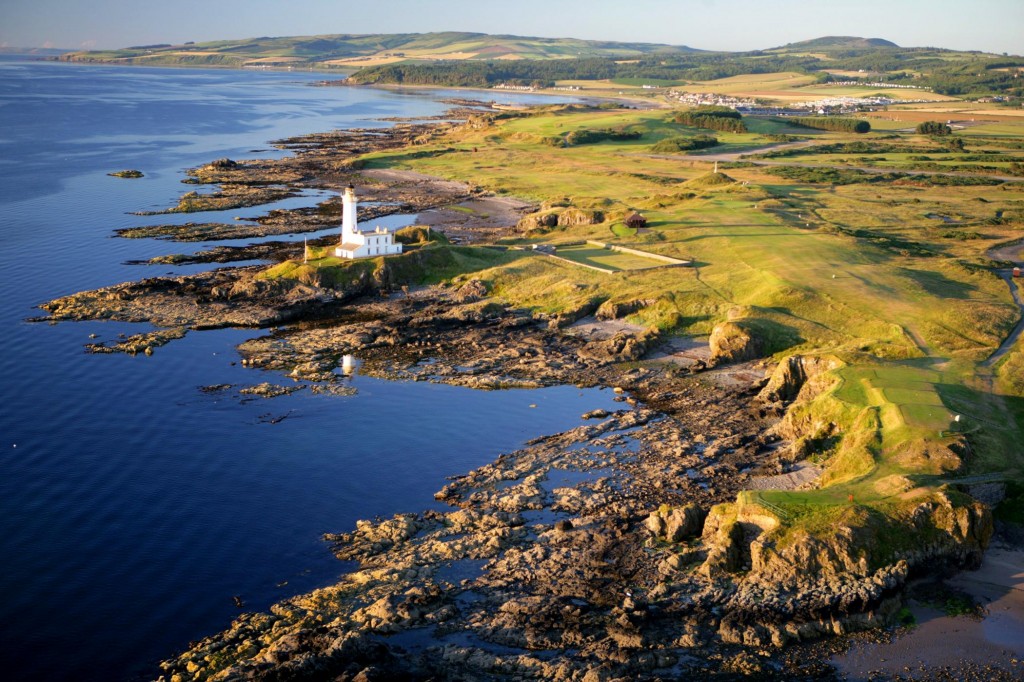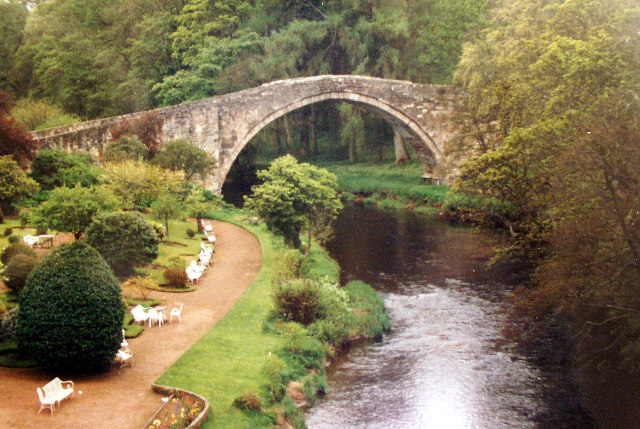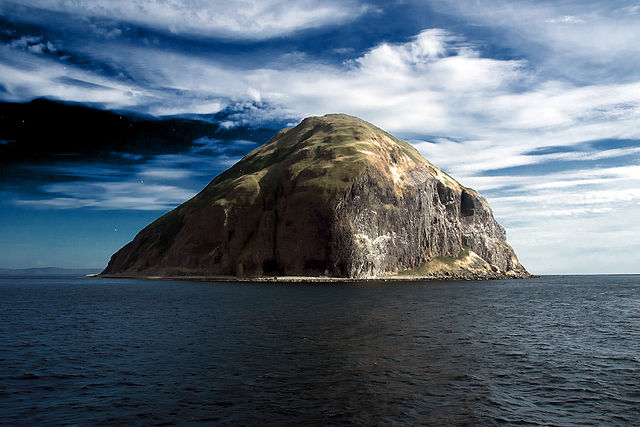Return to Turnberry 1: May 10, 2008
[I first posted the next five entries on Turnberry on my old blog site, Three Guys Golf, exactly two years ago. As the three guys retired that site I saw no harm in reviving the material here; it’s dated only in a specific, not general sense. For that reason I’ve left the original dates in place. There were big doings there at the 2009 Open Championship, and I refer to these in another post here.]
I’m in Robbie Burns territory, the birthplace of Scotland’s national bard just up the road in the town of Alloway. Burns will get his due in a few nights’ time, but I can find no evidence that he ever actually played golf, or gowff, despite these lines, perfectly descriptive of the game:
The best-laid schemes o’ mice an’ men/Gang aft agley,/an’ lea’e us nought but grief an’ pain,/For promis’d joy!
One of the world’s loveliest golf courses, the Ailsa Course at the Turnberry Resort here in southwest Scotland along the Ayrshire coast, is the site of the 2009 Open Championship–reason enough for a team of North American golf writers to try out the course by going head to head against a European squad.
Clearly this must leave one team joyful, celebrating with a wee dram, while the other writhes in grief and pain, drowning its sorrows with a wee dram.
But the competition is yet to come. Since I have to leave the event a day early, I arrived a day early, making the hour plus journey from Glasgow airport to Turnberry in the agreeable company of driver Ricky Fulton, formerly of the Royal Navy for 30 years, and hence up on his military history.
He pointed out, as we drove past the Fenwick Moor, that in May of 1941 Hitler’s second-in-command, Rudolph Hess, crash-landed a Messerschmitt in Fenwick Moor while on a bizarre personal crusade to sue for peace.
Otherwise, Fulton opined, “The only things that grow on Fenwick Moor are trees and sheep—or haggis on legs, as I like to call them.”
Fulton took me on the scenic route into Alloway, past Burns’ natal cottage, his parents’ gravestones, the Brig o’ Doon (literally, the bridge over the River Doon), which figures prominently in his long poem, “Tam o’ Shanter.”
Fulton said, “Turnberry is actually closer to Northern Ireland than it is to Glasgow. It’s about 60 miles from Glasgow. But across the Firth of Clyde to Ireland is about 40 miles.”
On this hazy day, Ireland wasn’t visible at all, and neither was the totemic Ailsa Craig, a volcanic mound ten miles off the coast, but no scenic discount kicked in.
I played a jetlag round on the Ailsa course with John Butler from Houston, Texas, who told me he had paid something over £200 to play. With the current horrendous exchange rate, that’s more than $400 dollars, pricey for any round of golf.
John played fairly well for his first go-round in Scotland, despite some eye-opening and repetitive work in the revetted pot bunkers. But say he had shot 100—that would have been about $4 a stroke. (“Count the lost balls,” John said, “and some would have been $8 a stroke.”)
That’s some serious money, perhaps enough for a down payment on those new wood floors John’s wife has been yearning for. But he was well-armed with well-worn excuses: “It’s not every day you get to play a British Open course,” never mind that he was going to try to play the Old Course at St Andrews the next day. Another was, “I may never pass this way again.”
I think I’ve used that one myself. But, here I am again, having attended a similar event here back in 2004. That was my first time to golf in Scotland, and after a jet-lagged round at Royal Troon, the Ailsa course blew me away.
It was no less agreeable today, although my decent start gradually unraveled. By the time we reached the fifteenth tee I was able to point out to John the faint outline of the Ailsa Craig, but I was now deep into a double bogey shankfest. I chalked it up to fatigue, thereby bypassing excessive grief and pain.
Turnberry has a good deal of intriguing history attached to it (more of which to come), much of it well-documented on the clubhouse walls. There are also display cases of antique clubs designed by Old Tom Morris and other ancient artisans of the game.
There was one club, circa 1905-1910, that caught my eye: the Plain faced anti-shank lofting mashie. It looked amazingly like the F2 wedge now on the market from Face Forward Technologies. La plus ça change…. I had an F2 once, and now I’m wondering why on earth I gave the club away without checking out its anti-shank lofting capabilities.




